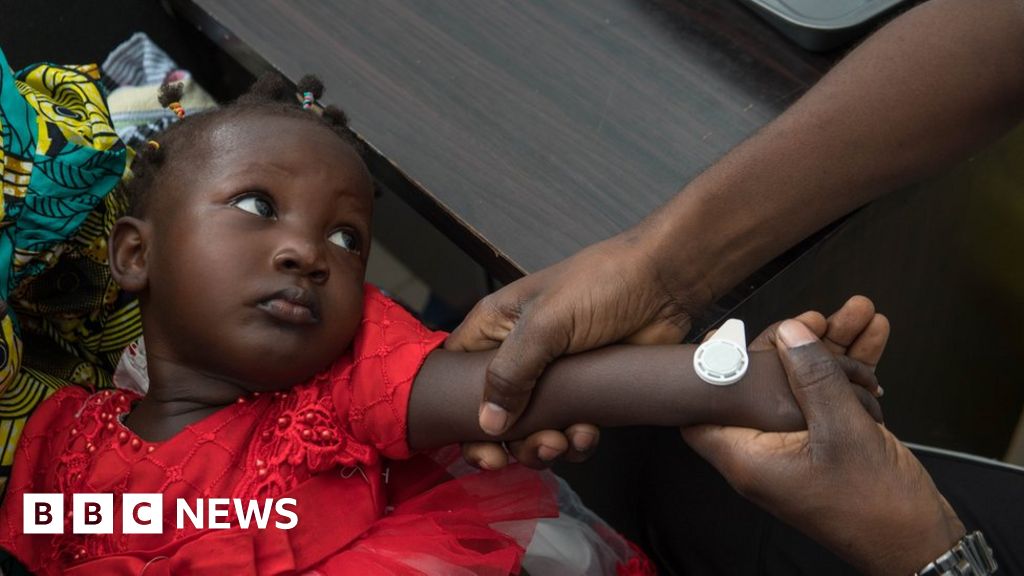- By Philippa Roxby
- Health reporter
Image source, MRC Unit The Gambia at LSHTM
A vaccine patch could be a safe and effective alternative way to protect young children against measles, a trial in The Gambia suggests.
The device – the size of a sticking plaster – is easier to transport and store than standard injections, especially in remote areas.
Measles is a very contagious disease which is common in children, and can kill.
Protecting vulnerable children worldwide is a priority, experts say.
Microscopic needles
Despite the existence of a very effective measles jab, falling vaccination levels since the Covid pandemic have left millions of children unprotected, particularly in low- and middle-income countries.
But now, scientists hope microneedle-patch technology can put vaccinations back on track with 95% of children immunised.
The microarray patch sticks to the arm and lots of microscopic needles deliver the vaccine through the skin, with no pain.
“These are extremely promising results which have generated a lot of excitement,” said paediatrician Prof Ed Clarke, vaccine and immunity lead at the London School of Hygiene & Tropical Medicine Medical Research Council Unit The Gambia.
“They demonstrate for the first time that vaccines can be safely and effectively given to babies and young children using microarray-patch technology.”
Image source, MRC Unit The Gambia at LSHTM
In the trial, involving more than 200 healthy toddlers and babies, the immune response to the patch was as strong as to the jab.
After one dose, more than 90% of babies were protected against measles and all infants against rubella – and there were no safety concerns.
The patch stayed in place for five minutes – but that will come down to a minute or even less in future trials, the researchers say.
And it could eventually be used against other diseases.
Spread quickly
The patch has several advantages over needle injections – volunteers with minimal training can apply the patch, instead of doctors and nurses, and fridges for transporting and cold storage are no longer necessary. It also reduces people’s fears over needles and the risk of injuries from them.
Even in countries such as the UK, where there is no shortage of these resources, the patches could be more convenient and attractive to some parents of young unvaccinated children, the researchers say.
The latest figures for England show measles cases rising, with a particular spike in recent weeks in London, where some areas have low measles vaccination rates.
In these communities, it takes only one child to catch measles for it to spread quickly, health experts warn.
The measles, mumps and rubella (MMR) jab offers the best protection against measles.
Two doses by the time children start primary school are recommended but older children and adults can catch up on vaccines at any point.
In the same year, there were about 136,000 deaths from measles, mostly among under-fives who’d had only one dose or none at all.
Co-study author Dr Ikechukwu Adigweme said: “We hope this is an important step in the march towards greater vaccine equity among disadvantaged populations.”
Larger trials among young unvaccinated children are now planned, to see whether the patches could be rolled out more widely.

Sarah Carter is a health and wellness expert residing in the UK. With a background in healthcare, she offers evidence-based advice on fitness, nutrition, and mental well-being, promoting healthier living for readers.








